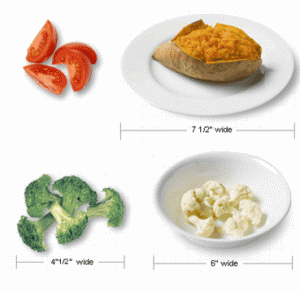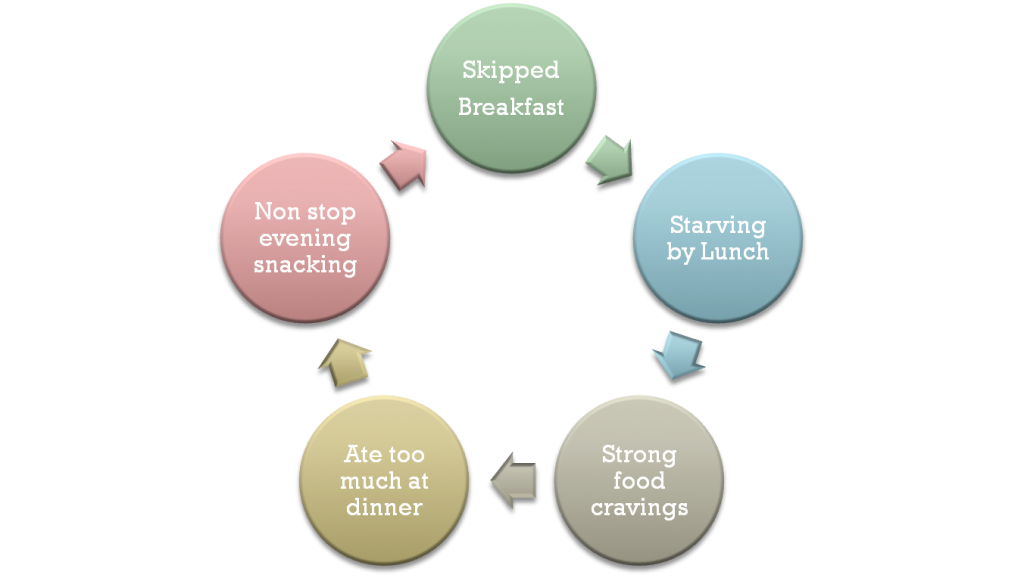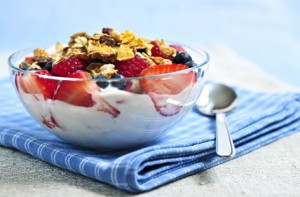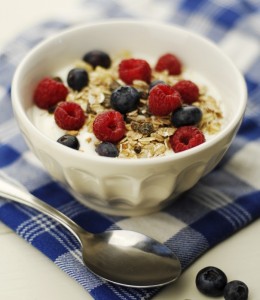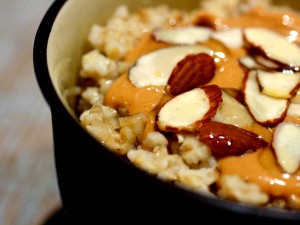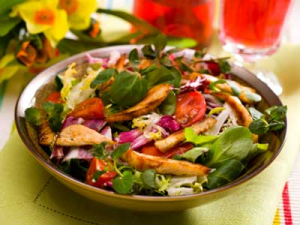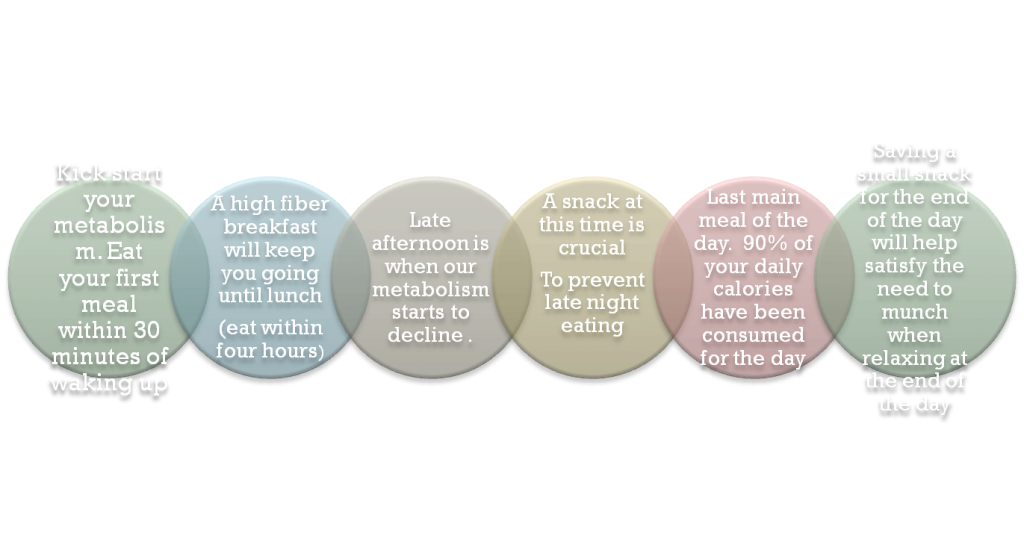Planning is everything when trying to lose weight and establish new healthy habits. But putting together a healthy balanced menu can be difficult until you get the hang of it.
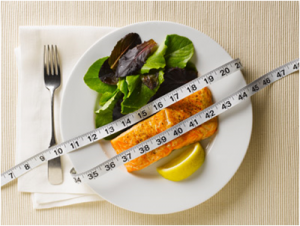
These tips will lay out the basics of structuring a healthy menu and help on your road to healthier eating.
Your calories from food come from three main categories Carbohydrates, Proteins, and fats. All three food categories are necessary for the body to be healthy. Although carbohydrates and fats sometimes get a bad rap for being the cause of weight gain, it is eating too much or choosing the wrong ones that is usually the problem.
Carbohydrates at 55%
1200x.55=660 carb calories
660/4=165g
Proteins at 20%
1200x.20=240 protein calories
240/4=60g
Fats at 25%
1200x.25= 300 calories
300/9=33g
Note: In this example we are using 1,200 calories. Your calorie needs may differ depending on sex, age, and activity level. 1200 calories is the minimum amount of calories recommended to safely lose weight over an extended period. Men and very active women may need to add additional calories to meet their particular needs.
Let’s take a look at those food groups that make up our nutritional requirements
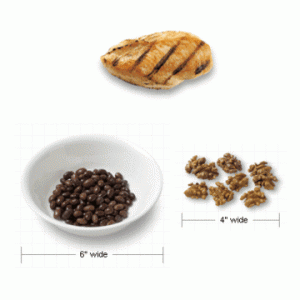 Protein
Protein
5 to 6 ounces from lean sources.
Chicken/turkey (no skin white meat preferred)
Beef – ground hamburger, steak, etc as lean as possible (remove any visible fats)
Pork – lean cuts only like pork tenderloin, ham. No sausage, bacon, pork chops (remove any visible fats)
Fish – try to eat at least two meals of cold water fish weekly, such as Salmon, mackerel, anchovies, sardines, and herring (SMACH) these fish have a high level of Omega 3 fatty acids, and are essential to a healthy diet. Other fish is also except-able, as long as it is not breaded or deep fried.
Vegetables And Fruit
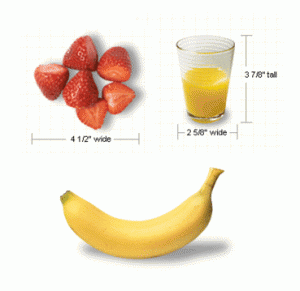
Fruit two to four servings daily. Serving size = ½ cup cut up fruit or whole fruit (apple) no bigger than a tennis ball. Think color and v Fruit
Grains- breads – Pasta
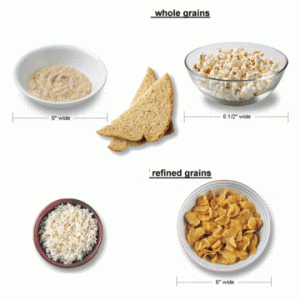 Grain two to three servings daily Choose only whole grain sources (check labels carefully, look for the words Grain two to three servings daily Serving size = 1 oz. (average sliced bread) or ½ cup cooked brown rice, wild rice, quinoa, or other cooked grain. ½ cup Cooked or cold cereal (check cold cereal box nutritional facts label some cereals are heaver then others) whole grains” not just whole wheat or wheat flour) Choose a cereal with 5 grams or more of fiber per serving.
Grain two to three servings daily Choose only whole grain sources (check labels carefully, look for the words Grain two to three servings daily Serving size = 1 oz. (average sliced bread) or ½ cup cooked brown rice, wild rice, quinoa, or other cooked grain. ½ cup Cooked or cold cereal (check cold cereal box nutritional facts label some cereals are heaver then others) whole grains” not just whole wheat or wheat flour) Choose a cereal with 5 grams or more of fiber per serving.
Fats and Oils

Oils and Fats 5 teaspoons worth of total fats and oils from all food sources That includes any fat found in the meats, grains, vegetables, you eat and any added fats you add to cook or enhance the flavor of your food. Be careful these foods add calories up fast with a small volume of food. Even healthy fat sources contain 9 calories per gram of weight.
Organizing your meals during the day
How we structure our meals has a big effect on when we will get hungry. And can make a huge difference in our weight loss efforts. Every meal you eat (or don’t eat) effects the next meal you will eat. So planning your meals you will be eating in advanced can be a very impotent component to your weight loss efforts. Knowing what to eat and when will help you feel yourself becoming naturally hungry and satisfied throughout the day.
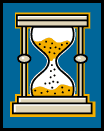 Breakfast sets the tone for the rest of the day.
Breakfast sets the tone for the rest of the day.
Research shows that breakfast skippers have trouble with late day eating and constant snacking. Eating breakfast helps you to make better choices during the day.
Start your day with fiber in mind. Fiber is a POWER HOUSE when it comes to appetite control.
Bandsters tend to be a little tight in the morning.
Replace lost fluids before eating breakfast.
Start with a warm beverage, Warm beverages helps reduce morning tightness and can make it easier to eat breakfast.
Breakfast ideas:
choose one of the following

1 to two eggs, (two eggs if using egg whites only) or ¼ cup egg substitute. With ½ ounce low –fat cheese. 1/4 cup veggies (for omelet or breakfast burrito ) and 1 slice whole grain wheat toast or tortilla.
Lunch and dinner
Lunch and dinner meals are about the same as far as their components and structure.
Choose from 2 to three ounces of lean solid animal protein or ½ cup beans, legumes or soy alternative. With ½ to 1 cup cooked or raw vegetables. And if you have the room you can add ¼ to ½ cup grain serving (provide that you have not eaten all your grain servings for the day)
Here is a trick to help size out your portions
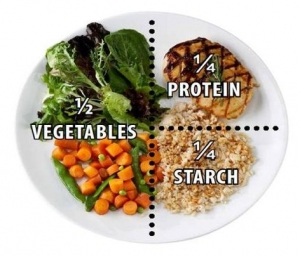 Use a 7” plate (try a paper plate for this demonstration) draw a line through the middle, creating two halves. In one half, write “vegetables ½ cup. Then draw a line through the other half section, creating to quarter sections. In one quarter section, write “protein 2 to 3 ounces. In the last quarter section write grain ¼ cup.
Use a 7” plate (try a paper plate for this demonstration) draw a line through the middle, creating two halves. In one half, write “vegetables ½ cup. Then draw a line through the other half section, creating to quarter sections. In one quarter section, write “protein 2 to 3 ounces. In the last quarter section write grain ¼ cup.
Always start with your protein source. Cut it up ahead of time into tiny tip of your baby finger bite size pieces. This will remind you to slow down and chew your food completely. After eating the protein, follow with eating the vegetable. And if you are not full yet you can then eat the grain portion. Even if you eat all of this measured food in the larger volumes you will not exceed 1 1/2 cups total volume of food. We need to use good old fashion portion control, until we get a fill level that will help us with that.
Healthy Meals
View Recipes gallery

Kabobs are fun and easy to make. First, choose what you type of meat or seafood you’d like to use, and then chop up some onions, bell peppers and zucchini. Slide each piece onto a skewer, grill your kabobs and enjoy
How does snacking help with over eating?
Use Snacks to control hunger and fill in nutritional gaps
Strategically placing snacks at critical times during the day, helps prevent over eating at your next meal.
Use the rest of whatever choices you have left from the various food group requirements to fill in the gaps for strategic snacking. (Between breakfast and lunch, lunch and dinner, or save it for an after dinner snack, if you tend to need a little something in the later part of the day.
Sample snacks
Fresh fruit, fruit smoothie, yogurt and fruit, yogurt and granola, apple and peanut butter, Triskets and peanut butter, low-fat string cheese, low fat or air popped pop corn, ¼ cup almonds/walnuts, non – fat or sugar free jello or pudding, vegetable soup, raw veggies and hummus dip.
Super Snacks With 100 Calories or Less, Snack time superstars , Avoid the Afternoon Energy Slump – Snack Ideas for 100 Calories or Less
These are small; tide you over snacks, not an all out binge. So stay within 100 to 200 calories.
Half an Apple With 1 Tablespoon of Peanut Butter



